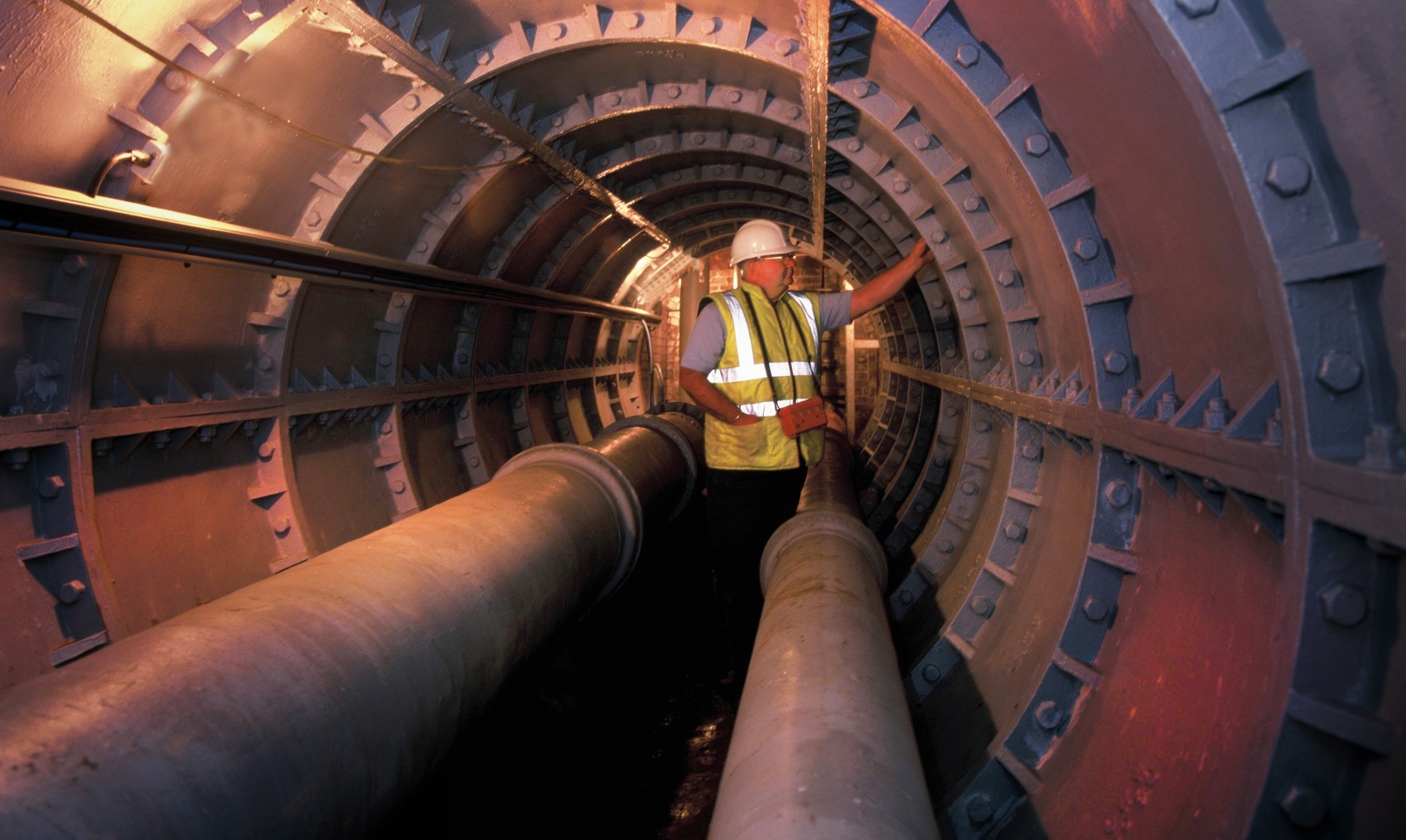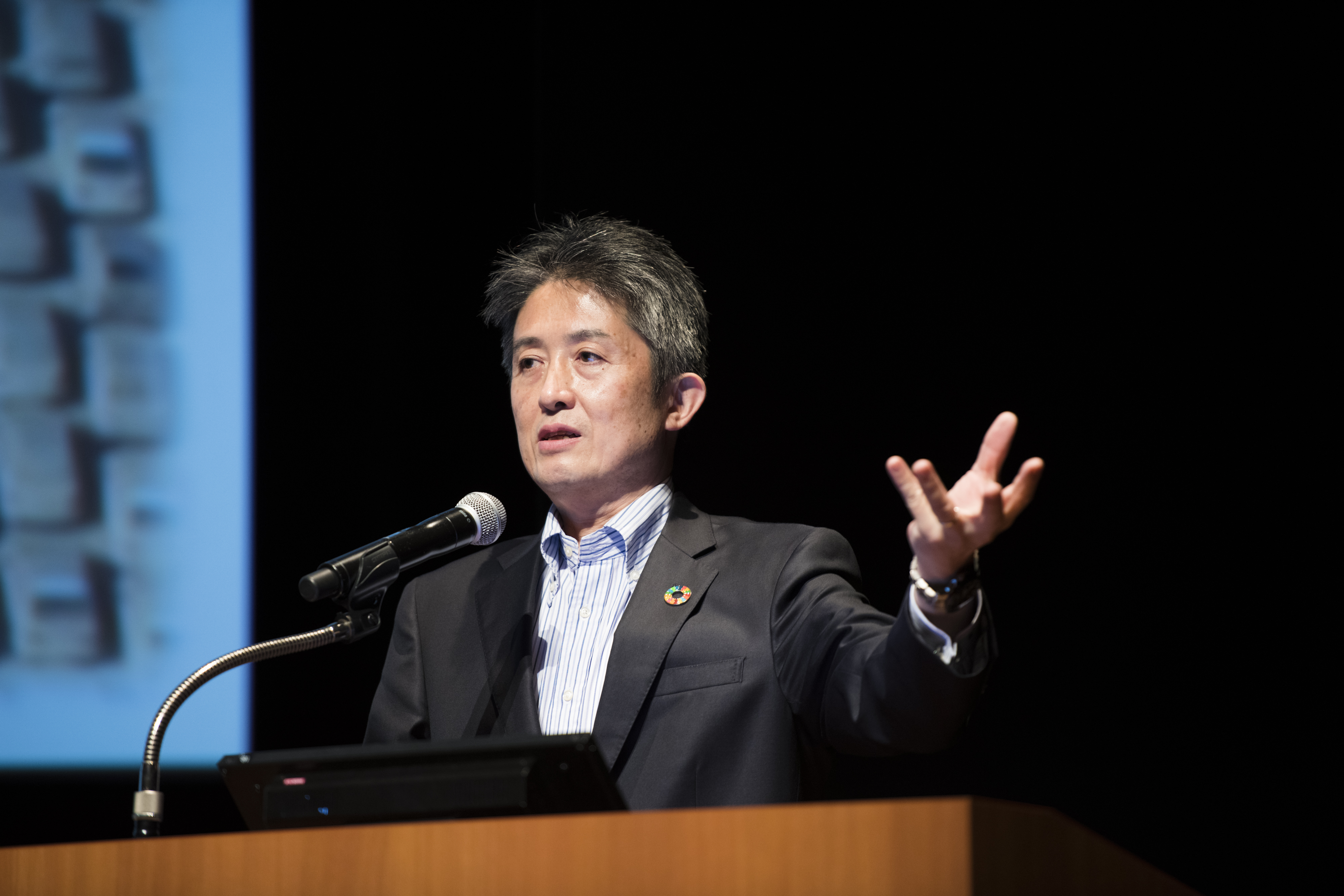
Water, Climate Change, and Sustainable Development
October 25, 2022
The Tokyo Foundation for Policy Research hosted a symposium on July 22 to showcase its updated lineup of research programs, many of them launched in October 2021. Here, the principal investigator of the program on sustainable water management outlines the major water and climate-change challenges confronting humankind.
* * *
Today, the issues confronting society with regard to water and climate change are regarded as pressing issues for everyone with a stake in the future of our society. The United Nations has established the Sustainable Development Goals as the backbone of the global response to these issues. Achieving these ambitious targets will require efforts not only by governments but also by private businesses and individuals. Investors increasingly expect companies to make fuller ESG (environmental, soc, and governance) disclosures and to use green finance to raise funds for investments in renewable energy and other initiatives to reduce greenhouse gas emissions and address climate change.
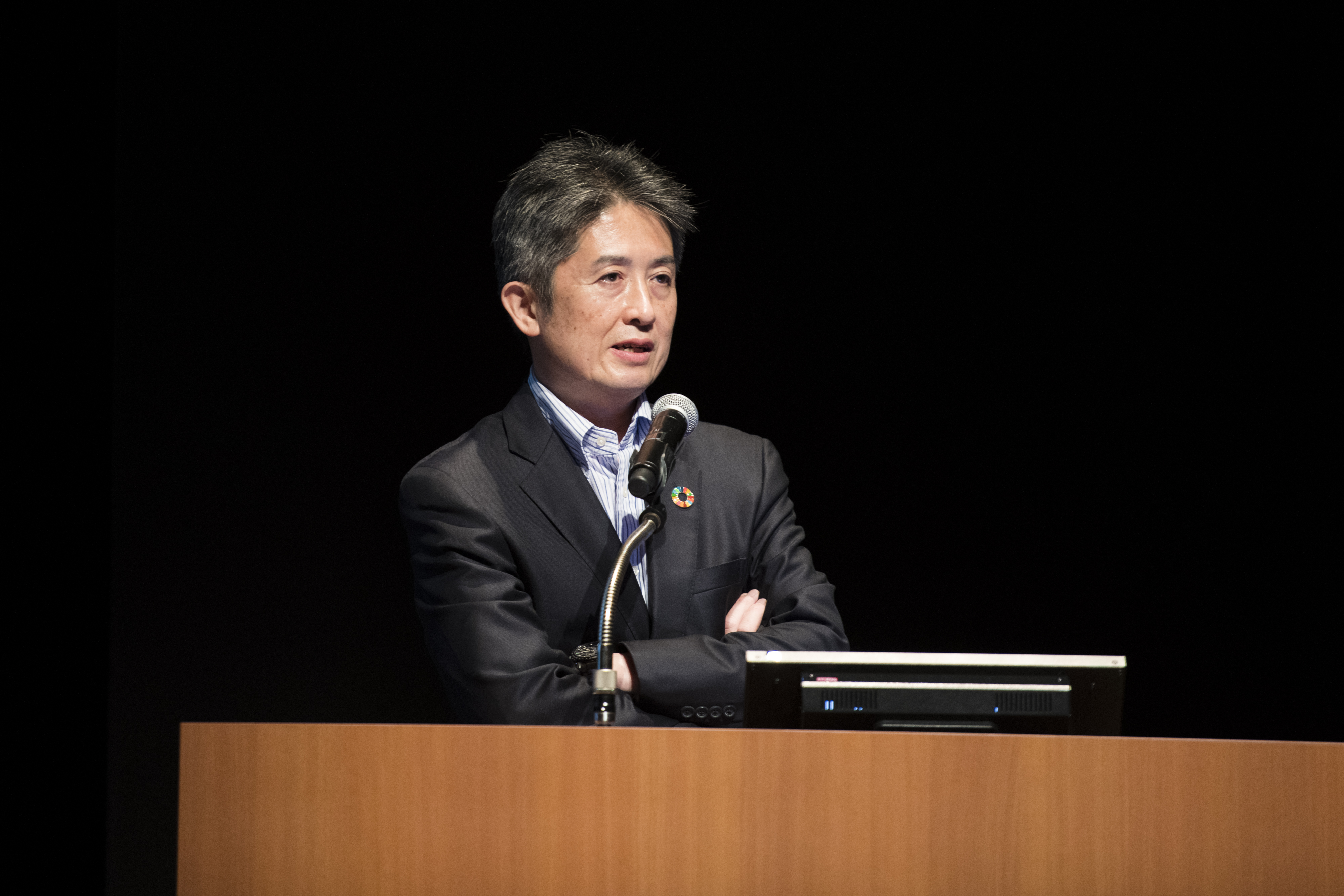
Relative Shift in Global Risk
One reason for these trends is the shift in the relative importance of global risks. The end of the Cold War prompted the world’s countries to set aside minor differences and focus on bigger issues they faced in common. The global environment was one concern that the international community obviously needed to address together, and this remains unchanged today, even in the face of such recent crises as the Russian invasion of Ukraine and the COVID-19 pandemic.
One reason for this is that people around the world can see for themselves that climate change has been exacerbating the severity of natural disasters in many parts of the world. In Japan, damage caused by typhoons and torrential rains is intensifying. Increased storm damage has also been reported in Europe and North America, and life-threatening heatwaves and droughts in western United States and across Europe have caused water shortages and disrupted economic activity.
In 2022, heatwaves across Europe led to more than a thousand fatalities in Portugal. In addition, a drastic fall in water levels in the Rhine made large stretches of the river unnavigable, blocking a major distribution artery and raising concerns about coal-fired power stations and nuclear power stations away from the coast that rely on the river for cooling water. With water temperatures rising, concern has been expressed that energy generation may need to be reduced. In California and other western states in the US, meanwhile, droughts in recent years have led to restrictions on domestic water usage, and blistering wildfires have destroyed homes and forced people to evacuate.
There are also concerns about the impact of water shortages on agricultural production, and some warn that this may exacerbate the ongoing food crisis triggered by the war in Ukraine. In France, for example, the production of corn used for animal feed is expected to be down by 18.5% compared to last year. In the vulnerable societies of sub-Saharan Africa, the Middle East, and South Asia, there is also a danger of food shortages caused by drought leading to social unrest and mass migration. This could lead to social instability in the countries taking in the refugees, similar to those seen in Europe during the last migration crisis in 2015.
Not surprisingly, companies and organizations that have performed well under the prevailing international global economic system and social frameworks hope to avoid any major shift from the status quo. Pension funds and insurance companies, as well as large-scale private investors, hold assets around the world, which could be at risk if sudden changes in the climate trigger natural disasters. This gives them an added incentive to maintain the status quo and to minimize the impact of climate change by reducing greenhouse gas emissions.
Falling Discount Rates and a Weaker Public Sector
Another major factor behind the corporate desire to lower the risk of environmental and social change has been falling discount rates, which has forced companies to run their business from a long-term perspective. These rates, used in discounted cash flow analysis to determine the present value of future cash flows, shift in line with changes in interest rates and economic growth. The days when investors could expect high returns from investing in China and other emerging economies, where annual growth rates sometimes exceeded 10%, are no more, and the impact of the pandemic has lowered global growth to around 3%.
This has caused discount rates to fall as well, meaning that companies must run their business on a lower internal rate of return and look to recoup returns on investments in the long term, making them more sensitive to social and environmental changes. They had been able to overlook such factors in the past while focusing on short-term returns, but this is no longer a feasible strategy.
The predominant role the government and the public sector had hitherto played in determining the course of society appears to be shifting as well, not only in Japan but also in many other countries. The public sector’s influence in economic, institutional, and manpower terms has diminished considerably, and its efforts alone are no longer sufficient to safeguard or resuscitate our society and environment. There is now no alternative but to tap into the productivity and capacity of the private sector. Of the nearly ¥4,000 trillion in Japan’s total assets, the government accounts for ¥700 trillion, households for around ¥2,000 trillion, and private entities for some ¥1,200 trillion. As these figures show, the government sector today accounts for a relatively small share of the nation’s assets.
Over the past few decades, there has been a steady decline in the proportion of University of Tokyo graduates moving into elite civil service jobs. This is not just due to issues with pay and working conditions. In the past, the best way for bright, ambitious young people to make their mark in society was to rise to a position of influence and power within the bureaucracy. But as the strength and social impact of private companies have grown, government jobs are no longer their obvious first choice; many of Japan’s best and brightest have begun to see opportunities to contribute to social change by either joining a promising private company or even by launching a start-up on their own.
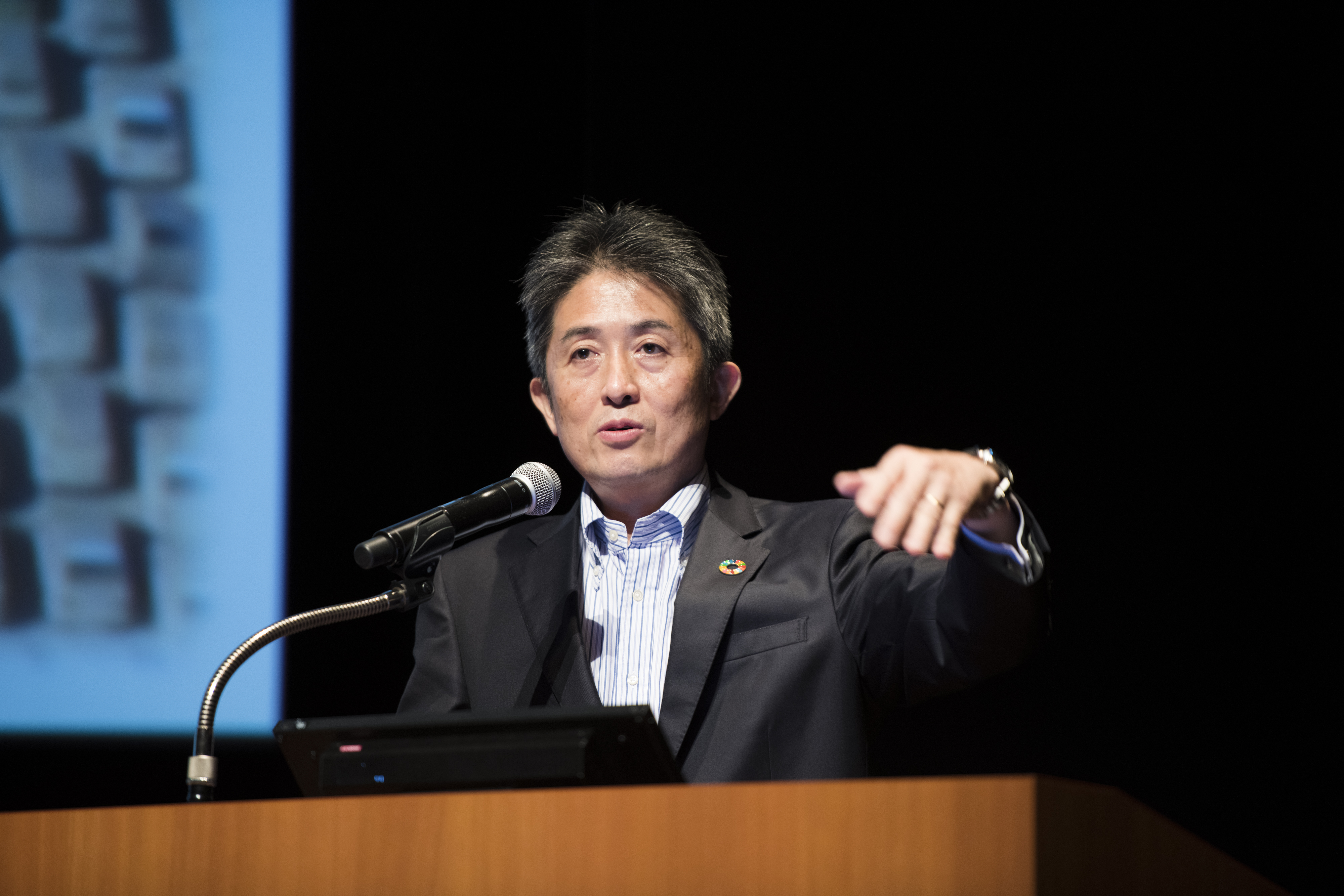
Complying with Soft Law
At the same time, attitudes in the private sector have also undergone a major change. Companies used to see social contributions as goodwill gestures and were generally happy to pay taxes and leave the task of addressing social and environmental issues to the public sector. But in recent years, many more companies have come to realize that implementing their own initiatives to build a sustainable society, rather than leaving matters in the government’s hands, is not only more efficient but is also good for publicity and, more importantly, can contribute directly to the sustainability of their business.
Even in strictly utilitarian terms, allocating resources toward achieving the SDGs and on ESG measures can be in companies’ interests. But such measures aimed at alleviating environmental problems and rectifying social inequities are also increasingly turning into quasi-requirements, noncompliance with which could expose companies to various risks. Although companies have no legal compulsion to follow such “soft laws,” they risk being shut out of the EU market, for example, if minimal standards are not met. Products and services that rely on child or forced labor, use conflict minerals, or cause serious environmental damage through greenhouse gas emissions or destruction of ecosystems are not allowed on the market. Some have argued that these criteria amount to nontariff barriers, established by Europe and the United States to block imports from developing and emerging economies. Even if this were true, though, companies that shirk their social and environmental responsibilities will face a bleak future in shrinking local markets.
Given the above, large-scale multinationals are understandably more likely to be proactive about achieving the SDGs, tackling climate change, and disclosing information on their ESG initiatives. In Japan, too, companies with overseas operations tend to have a better grasp of these global trends, with senior management taking the lead in setting targets and carrying out governance reforms to ensure their companies are not shut out of overseas markets. But such enthusiasm, unfortunately, is not always shared by middle managers, who often have their hands full with day-to-day concerns and are less likely to see the bigger picture. If anything, younger employees in their twenties are wont to give as much importance to having a positive impact on society as fulfilling their personal ambitions through a successful career. As such, companies with strong sustainability track records are more likely to attract young talents.

Countering Climate Change Skeptics
The number of climate change skeptics, who deny that global temperatures are rising or that the warming is not due to human activity, seems to have declined in recent years. But there are still people who, finding fault with a few passages in the reports issued by the Intergovernmental Panel on Climate Change, seek to discredit the panel itself or argue that measures to combat climate change will do more harm than good. Such opinions are no doubt meant to appeal to (and profit from) companies hoping to avoid taking any steps to reduce their greenhouse gas emissions.
But are natural disasters really increasing due to global warming? According to published by United Nations Office for Disaster Risk Reduction, headed by Mami Mizutori, there were 7,348 recorded natural disasters in the 20 years from 2000 to 2019. They resulted in 1.23 million casualties and impacted an estimated 4.2 billion people (many of whom were affected by multiple disasters) and caused economic damage estimated at approximately US$2.97 trillion. Figures across all three of these categories increased compared to the previous 20-year period, when there were 4,212 natural disasters, costing 1.19 million lives and impacting 3.25 billion people, at an economic toll of $1.63 trillion.
Disasters like earthquakes and volcanic eruptions, which are unlikely to increase significantly in just a few decades, rose by about 20%. One reasons for this may be that in the pre-Internet, Cold War years, information about such events in remote regions of the world was not shared as widely as it is today. The instant access we now enjoy makes it easier to track and confirm data, resulting in the apparent increase in the number of such disasters.
The number of natural disasters overall, meanwhile, increased by 70%, with floods rising 2.3-fold and extreme heat events jumping 3.3-fold. These figures suggest that climate change has indeed had a major impact. There was only a slight increase in the number of fatalities, however, even though the world’s population increased by 30%, and the number of people affected by natural disasters rose by around 20%. Economic damage, meanwhile, surged by 80%, although part of this increase was due to inflation.
Storm Damage in Japan
In Japan, statistics for fatalities and economic damage from typhoons and floods from 1875 to 2019 serve as a reminder of the large-scale destruction caused by powerful typhoons almost annually immediately following World War II. A large typhoon in those years would routinely cause fatalities numbering in the thousands, including the Makurazaki Typhoon (Typhoon Ida) that hit Hiroshima in 1945; Typhoon Kathleen, which caused serious flooding in the Tone River in 1947; and Typhoon Jane, which caused massive damage across Shikoku and the Kansai region in 1950. The deadliest year of all was 1959, when the Ise Bay Typhoon alone claimed 5,000 lives and other storms took nearly 1,000 more. The number of fatalities has since gradually been falling; only twice in this century have annual casualties from typhoons and torrential rainfall exceeded 200—in 2004, following heavy rains in Fukui and again in Niigata and Fukushima Prefectures, and in 2018, following flooding in Mabi, Okayama Prefecture, and landslides in Hiroshima Prefecture.
The economic costs of natural disasters have not decreased, however. Damage was particularly severe in 2004 and in 2019, when Typhoon 19 (Hagibis) decimated wide areas of east Japan.
According to the General Insurance Association of Japan, the costliest typhoon in Japan’s history was Typhoon 21 (Jebi) in 2018, with insured losses topping ¥1 trillion due to flooding inside Kansai International Airport and other damage. Next was the East Japan Typhoon of 2019, resulting in nearly ¥600 billion in claims, followed by the ¥568 billion paid out in 1991 following Typhoon 19 (Mireille). Although this last example was in the last decade of the twentieth century, most other top 10 windstorms and floods occurred in this century. Even the tenth-costliest claim payment reached ¥160 billion.
Earthquakes may be what first come to mind in regard to catastrophic natural disasters in Japan. Indeed, the biggest claims ever paid for an earthquake were \1.3 trillion for the March 2011 Tohoku earthquake and tsunami, followed by ¥400 billion for the 2016 Kumamoto earthquake in Kyushu and the ¥120 billion for the 2018 Northern Osaka earthquake. But insured losses for all other earthquakes were less than ¥100 billion.
For the insurance industry, then, typhoons and heavy rainfall now represent a bigger priority than earthquakes in establishing appropriate premiums. Both in Japan and elsewhere in the world, there is growing concern about severe storms, not only because of the precious human lives that are lost but also because of the vast scale of the economic damage caused.
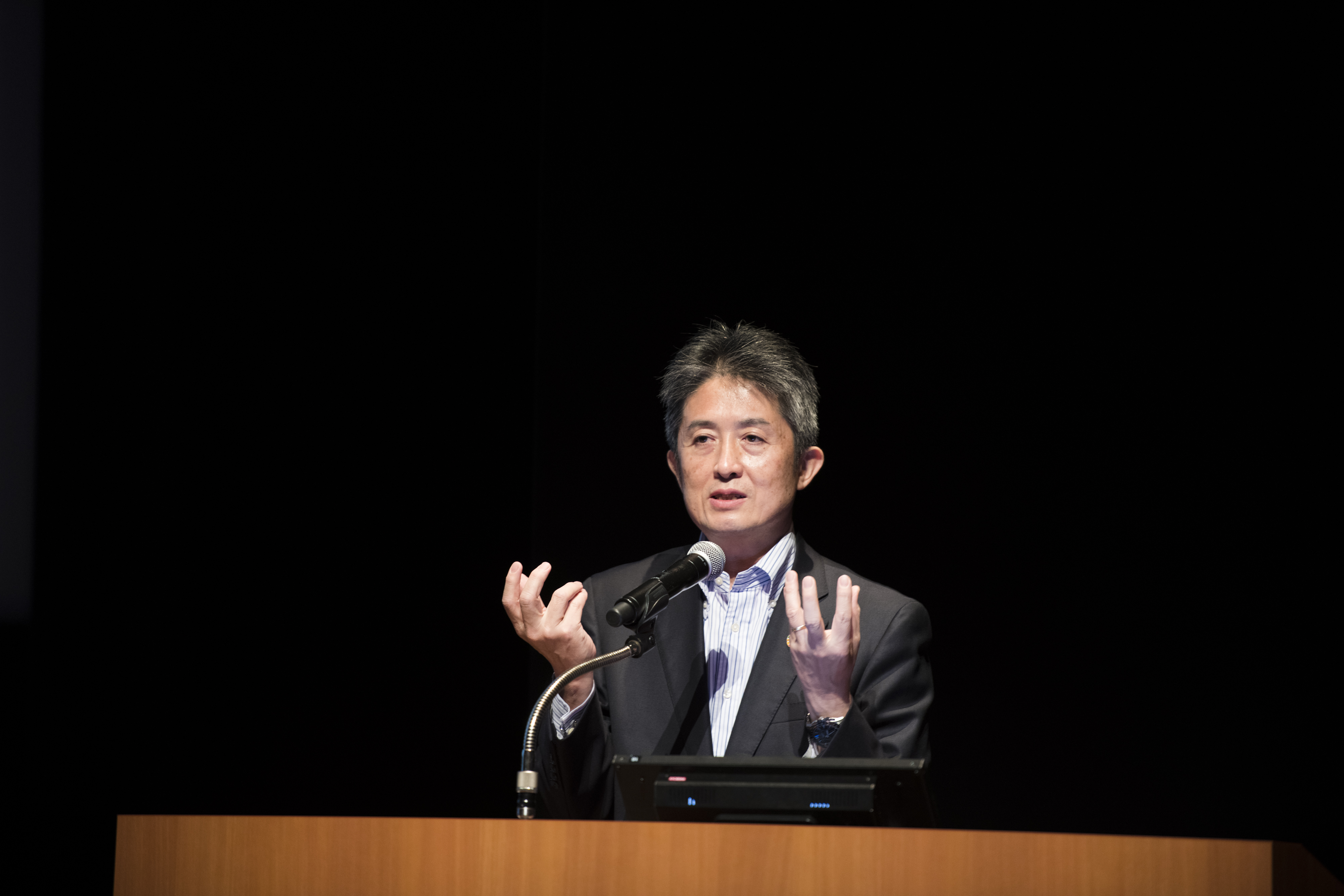
Conclusion
Science has demonstrated beyond any doubt that emissions of carbon dioxide and other greenhouse gases are causing temperatures to rise. Such changes in the global climate have fundamentally altered the water cycle and resulted in more frequent and intense extreme weather events. Statistics bear out the fact that torrential rains and heatwaves are becoming more frequent and are having a grave impact on society through sustained droughts and water shortages.
Given that private businesses are being compelled to operate with a long-term perspective and address societal challenges, it is in their own self-interest to promote climate change actions and to contribute to environmentally and socially sustainable development. Additional pressure for such initiatives is coming from long-term investors keen on expanding their ESG and green finance portfolios. The SDGs should be construed as roadmaps by which to assess the progress being made.
In addressing climate change and building a sustainable society, what should be our overarching goals? What concrete targets should we establish? What issues should we focus on? And how should we proceed? These are questions that the Tokyo Foundation for Policy Research’s Future Vision for Sustainable Water Management program will continue to address going forward in analyzing water-related issues in Japan.

![[Policy Research] Water Minfra: A New Strategy for Water-Centric Social Infrastructure](/files/research/2023/Oki_PG/Mizuminhura.png)


